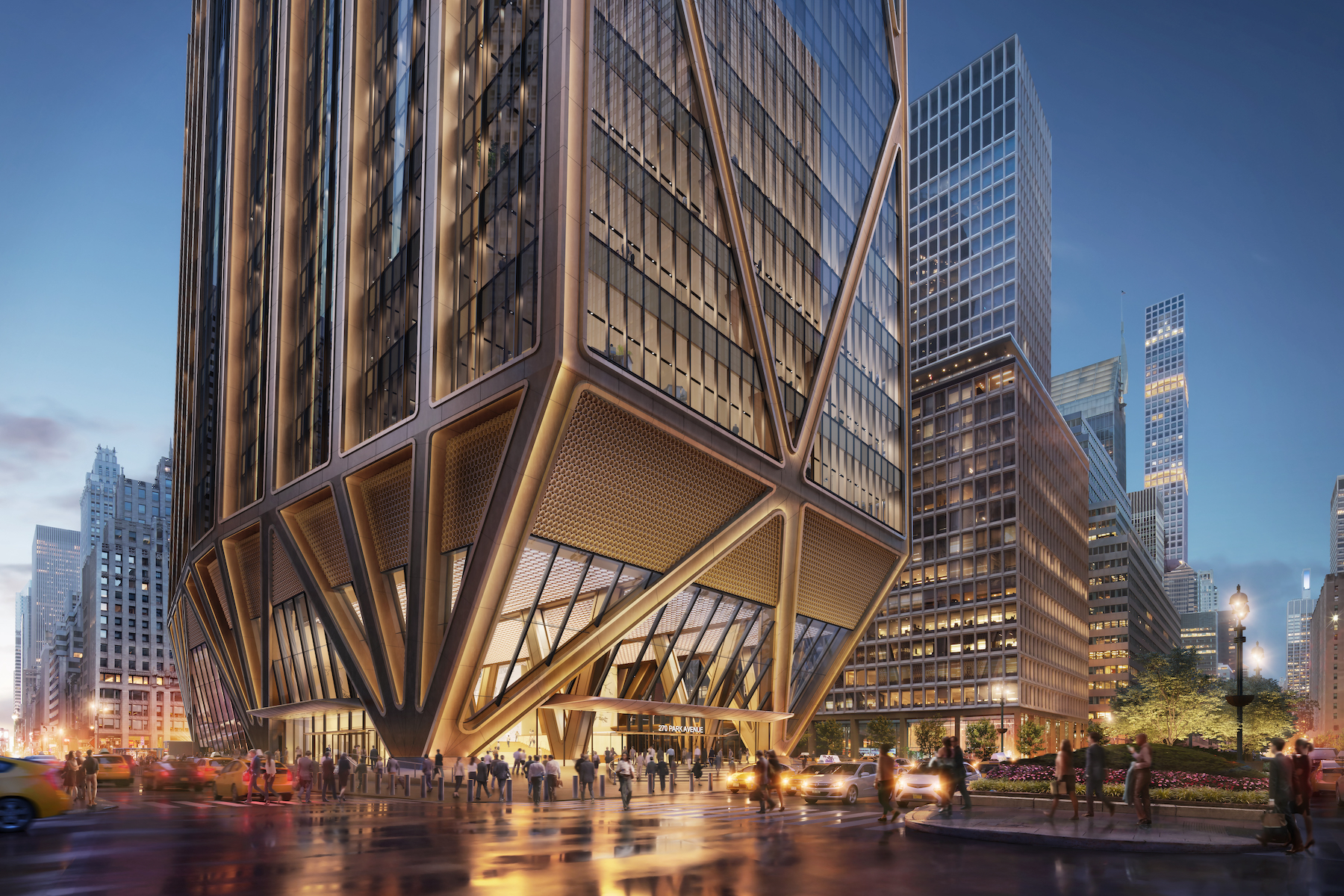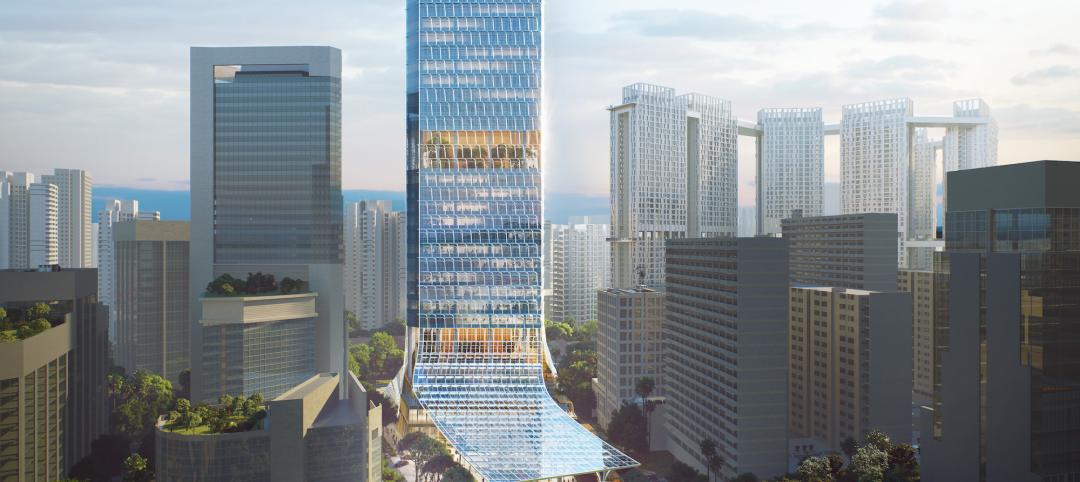JPMorgan Chase’s recently unveiled plans for its new global headquarters building in New York City that is rife with impressive sustainability credentials. The 1,388-foot, 60-story skyscraper will be a fully electric, net-zero operational emissions structure.
Designed by Foster + Partners, Chase’s headquarters at 270 Park Avenue will be New York City’s largest all-electric tower when completed by the end of 2025. It will have a capacity for up to 14,000 employees who will enjoy indoor air quality that exceeds the highest standards in sustainability, health, and wellness, according to a news release.
Using a state-of-the-art structural system to cope with site constraints below and at ground level, an innovative fan-column structure and triangular bracing will allow the building to touch the ground lightly across the entire block, the release says. The building will hover about 80 feet off the ground, extending the viewpoint from the Park Avenue entrance through to Madison Avenue. The property will feature an expansive public plaza with street-level green spaces.
Construction required that contractors thread the foundation of the new headquarters through Grand Central Station and the new Long Island Railroad Terminal below it. Inside, flexible column-free floor plates will allow for easily changeable layout and floor design, including inter-floor connections.
Designers strived for high health, wellness, and occupant comfort by:
- Doubling the amount of outside air and continuously monitoring air quality.
- Using advanced HVAC filtration systems to continually clean outdoor air while simultaneously cleaning recirculated air.
- Designing 50% more communal spaces and 25% more volume of space per person, giving more choices in where and how to work.
- Offering a state-of-the-art health and wellness center that will feature fitness areas, yoga/cycling rooms, physical therapy, medical services, modern mother’s rooms, and prayer and meditation spaces.
- Designing a large, modern food hall and a world-class conference center at the top of the tower.
- Creating a touchless journey for employees and visitors with more than 50,000 connected devices that will make it the most connected, data-driven high-rise building in New York City.
Environmentally friendly features include:
- Intelligent building technology that uses sensors, AI, and machine learning to predict and adapt to energy needs.
- Advanced water storage and reuse systems to reduce water use by more than 40%.
- Triple-pane glazing on the façade, and automatic solar shades connected to HVAC systems.
- Site will be 100% powered by renewable energy sourced from a New York State hydroelectric plant.
- The project recycled, reused, or upcycled 97% of the building materials from the demolition.
- Outdoor terraces featuring natural green space and plantings.
The project is the first under New York City’s Midtown East Rezoning plan that encourages modern office construction and improvements to the business district’s public realm and transportation system.
Owner and/or developer: JPMorgan Chase & Co.
Design architect: Foster + Partners
Architect of record: Adamson Associates
MEP engineer: Jaros, Baum & Bolles (JB&B)
Structural engineer: Severud Associates
General contractor/construction manager: Tishman Construction Company of New York
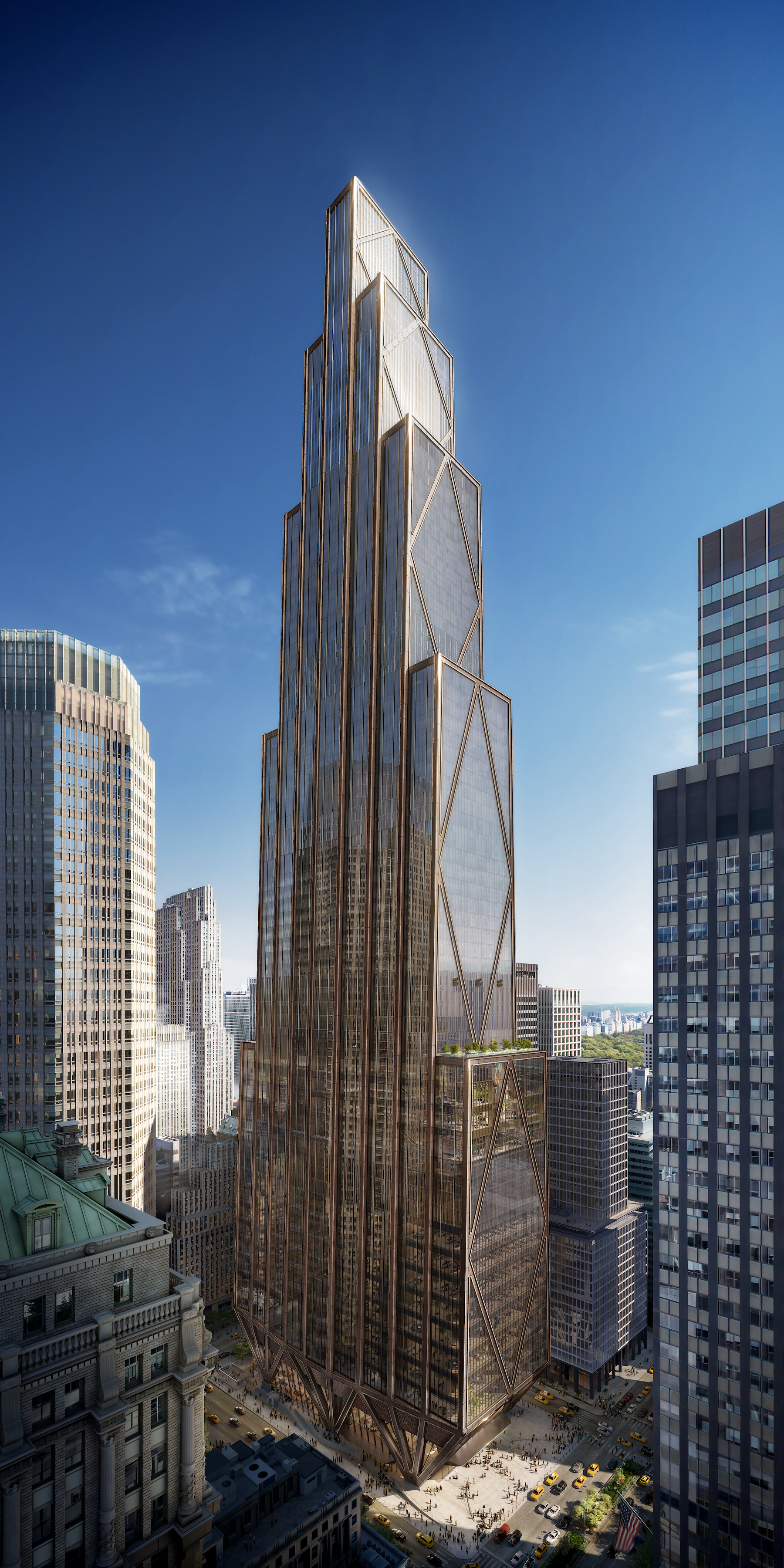
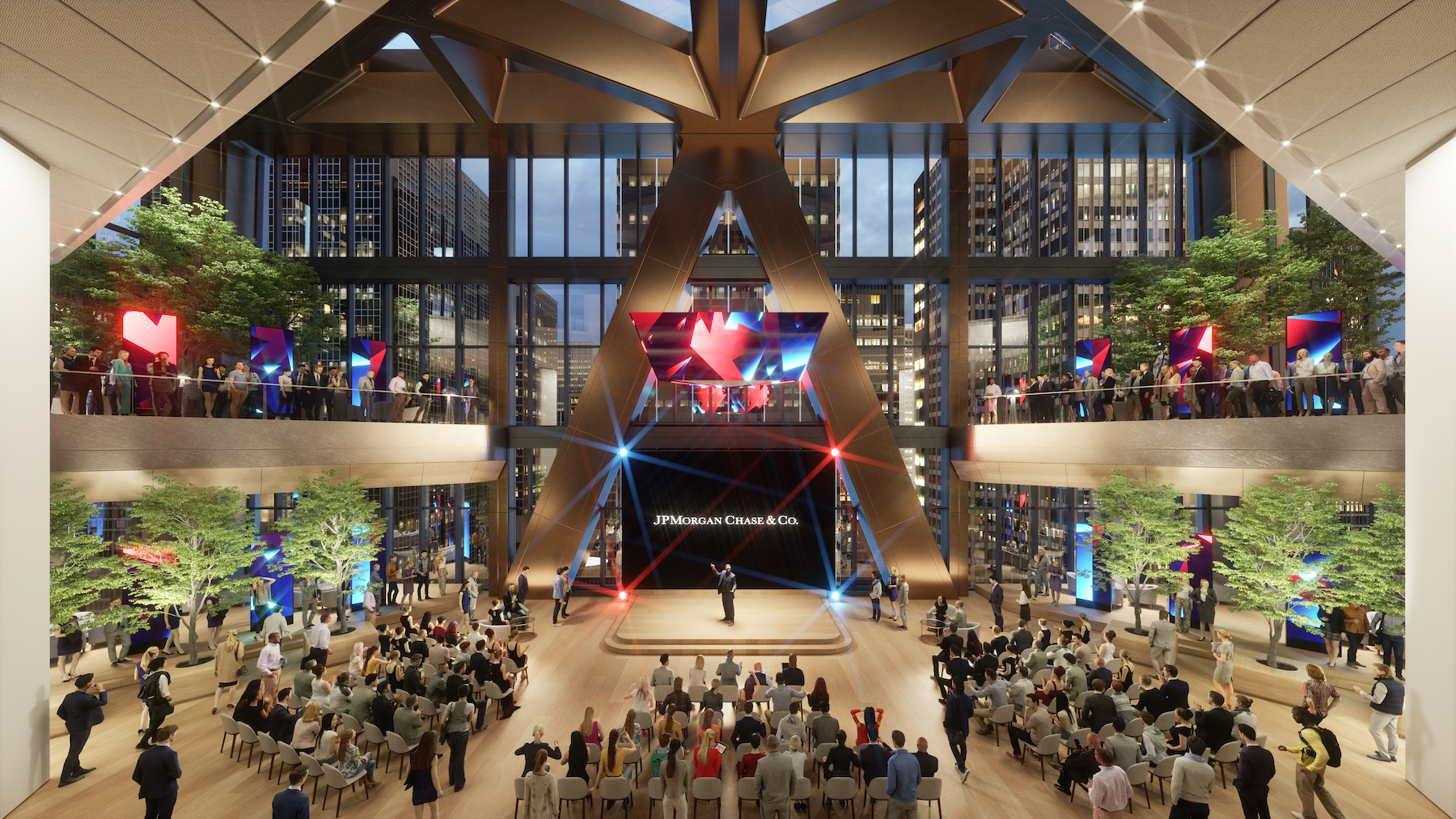
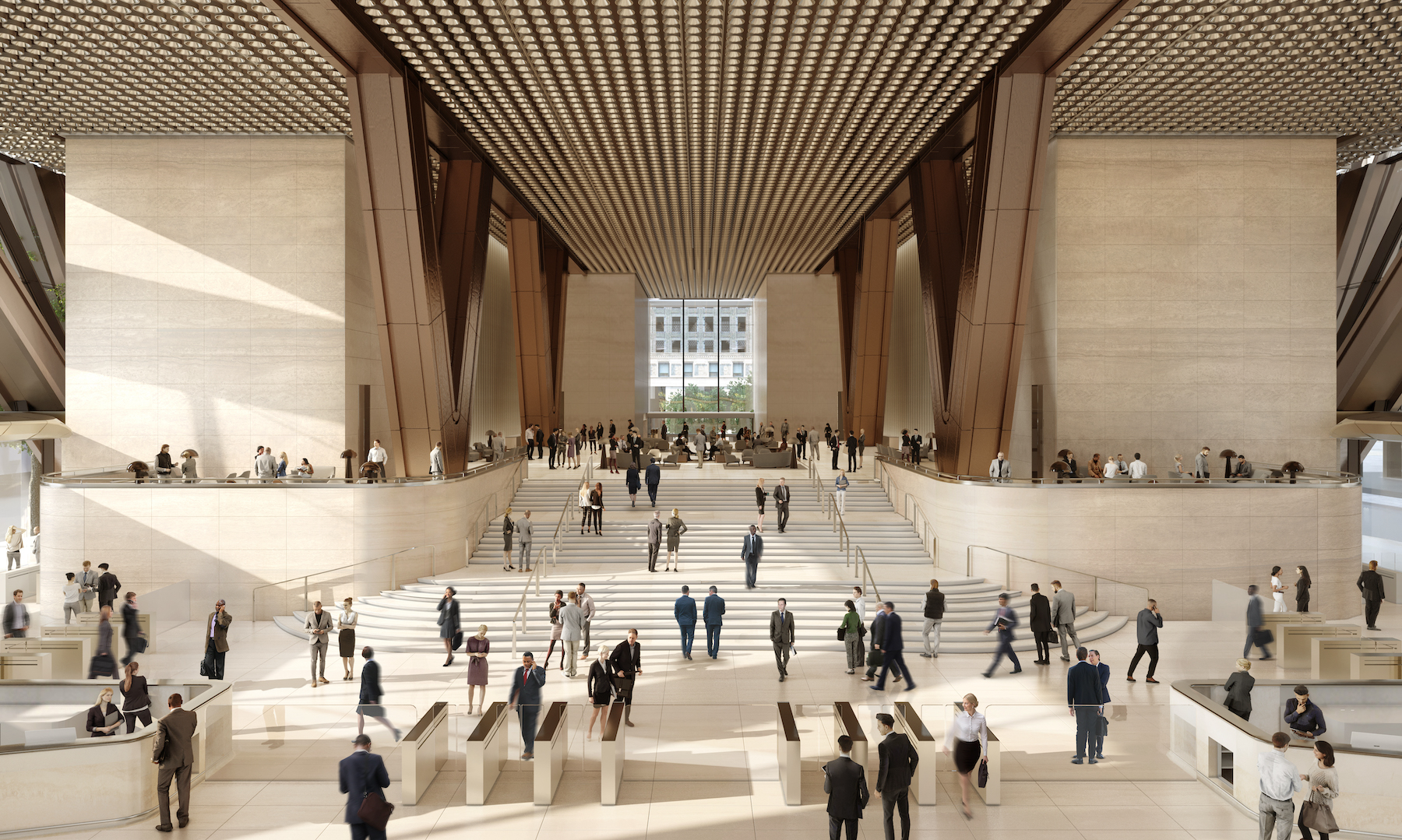
Related Stories
Adaptive Reuse | Aug 16, 2023
One of New York’s largest office-to-residential conversions kicks off soon
One of New York City’s largest office-to-residential conversions will soon be underway in lower Manhattan. 55 Broad Street, which served as the headquarters for Goldman Sachs from 1967 until 1983, will be reborn as a residence with 571 market rate apartments. The 30-story building will offer a wealth of amenities including a private club, wellness and fitness activities.
Sustainability | Aug 15, 2023
Carbon management platform offers free carbon emissions assessment for NYC buildings
nZero, developer of a real-time carbon accounting and management platform, is offering free carbon emissions assessments for buildings in New York City. The offer is intended to help building owners prepare for the city’s upcoming Local Law 97 reporting requirements and compliance. This law will soon assess monetary fines for buildings with emissions that are in non-compliance.
Office Buildings | Aug 15, 2023
Amount of office space in U.S. is declining for the first time, says JLL
In what is likely a historic first, the amount of office space in the U.S. is forecast to decline in 2023, according to Jones Lang LaSalle. This would be the first net decline according to data going back to 2000, JLL says, and it’s likely the first decline ever.
Office Buildings | Aug 14, 2023
The programmatic evolution of the lobby
Ian Reves, Managing Director for IA's Atlanta studio, shares how design can shape a lobby into an office mainstay.
Office Buildings | Aug 10, 2023
Bjarke Ingels Group and Skanska to deliver 1550 on the Green, one of the most sustainable buildings in Texas
In downtown Houston, Skanska USA’s 1550 on the Green, a 28-story, 375,000-sf office tower, aims to be one of Texas’ most sustainable buildings. The $225 million project has deployed various sustainable building materials, such as less carbon-intensive cement, to target 60% reduced embodied carbon.
Government Buildings | Aug 7, 2023
Nearly $1 billion earmarked for energy efficiency upgrades to federal buildings
The U.S. General Services Administration (GSA) recently announced plans to use $975 million in Inflation Reduction Act funding for energy efficiency and clean energy upgrades to federal buildings across the country. The investment will impact about 40 million sf, or about 20% of GSA’s federal buildings portfolio.
Market Data | Aug 1, 2023
Nonresidential construction spending increases slightly in June
National nonresidential construction spending increased 0.1% in June, according to an Associated Builders and Contractors analysis of data published today by the U.S. Census Bureau. Spending is up 18% over the past 12 months. On a seasonally adjusted annualized basis, nonresidential spending totaled $1.07 trillion in June.
Office Buildings | Aug 1, 2023
Creating a nurturing environment: The value of a mother’s room in the workplace
Since becoming an architect, Rebecca Martin of Design Collaborative has drawn a mother’s room into numerous projects. But it wasn't until she became a mom that she fully appreciated their importance in the workspace.
Adaptive Reuse | Jul 27, 2023
Number of U.S. adaptive reuse projects jumps to 122,000 from 77,000
The number of adaptive reuse projects in the pipeline grew to a record 122,000 in 2023 from 77,000 registered last year, according to RentCafe’s annual Adaptive Reuse Report. Of the 122,000 apartments currently undergoing conversion, 45,000 are the result of office repurposing, representing 37% of the total, followed by hotels (23% of future projects).
High-rise Construction | Jul 26, 2023
A 33-story Singapore tower aims to reimagine work with restorative, outdoor spaces
Architecture firm NBBJ has unveiled design details for Keppel South Central, a commercial tower in Singapore. The project, which is slated for completion in late 2024, will transform the original Keppel Towers into a 33-story, energy-efficient building that aims to reimagine work by providing restorative spaces and connections to the outdoors.


